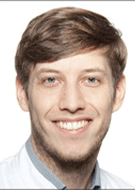Study Shows Fatigue Affects Quality of Radiology Resident Reporting
Researchers point to multiple factors contributing to fatigue

Fatigue and its effects on diagnostic accuracy are a concern not only for practicing radiologists, but also for residents just beginning their careers. Rising levels of fatigue and burnout in radiology are caused in part by the continually increasing volume of imaging studies radiologists perform. Between 1996 and 2010, CT and MRI examination volumes increased 280% and 380% respectively, according to a recent Radiology study, “Quantifying Radiology Resident Fatigue: Analysis of Preliminary Reports.”
Multiple countries have introduced national regulations or recommendations to restrict working hours, especially for residents. Yet researchers determined that cumulative work hours is only one of the factors that contributes to fatigue.
“Fatigue is not solely attributed to prolonged or off-hours shifts and sleep deprivation but is actually a multifactorial issue,” said lead author Jan Vosshenrich, MD, resident, Department of Radiology at the University Hospital Basel in Switzerland. “It’s also a result of performing high-volume and high-complexity tasks, which certainly characterizes the radiologist’s work environment.”
Interpreting imaging studies has become more complex and time-consuming as a result of the number of images acquired per study. From 1999 to 2010, image content increased 1,300% in CT studies and 540% in MRI exams, Dr. Vosshenrich said.
“Fatigue is known to be an important risk factor for performance deterioration, potentially leading to higher medical error rates,” Dr. Vosshenrich said.
"Decreases in report similarity over the course of workdays and workweeks suggest the effects of fatigue on residents’ report-writing performance.”
JAN VOSSHENRICH, MD
Tool Tracks Differences in Radiology Reports
To assess the effect of fatigue on radiology residents’ reporting performance, Dr. Vosshenrich and researchers compared preliminary radiology reports dictated by residents to final, radiologist-reviewed reports using a software solution developed by the radiology department at the University Hospital Basel.
The tool tracks changes between draft, preliminary and final radiology reports and allows edits performed between two report states to be reviewed through a comparison of text strings on a word level.
“Previous studies have evaluated fatigue in radiologists by assessing reporting accuracy using a single qualitative parameter,” Dr. Vosshenrich said. “In our study, we use parameters from the report proofreading process to reveal and quantify daytime and shift-dependent trends in report similarity.”
For the retrospective, single-center study, Dr. Vosshenrich and colleagues mined and analyzed data from 117,402 final radiology reports written between September 2017 and March 2020 for body, cardiothoracic, musculoskeletal and neuroradiology studies.
Of the total reports, 94,335 (80.4%) were dictated during day shifts; 9,593 (8.2%) were dictated during late shifts; 6,524 (5%) were dictated during weekend shifts; and 6,950 (5.9%) were dictated during night shifts. By calculating a Jaccard similarity coefficient between resident-written and final reports, the team quantified the amount of editing performed by staff radiologists on a scale of 0 to 1, with a score of 1 meaning the two documents were perfectly identical and required no edits.
After aggregating the data by day of the week and shift, the team performed a statistical analysis to determine the relationships between report similarity and the time and day of the week the reports were dictated. Overall, reports became less similar and required more editing as a residents’ day and work-week elapsed.
“The Jaccard similarity of residents’ preliminary and staff-reviewed final reports showed a negative correlation with increasing work hours during day shifts and weekend shifts,” Dr. Vosshenrich said.
Among resident reports dictated during day and weekend shifts, similarity decreased as the number of hours worked increased. Mean report similarity was lower on Fridays than any other day of the week. Compared to reports dictated at the beginning of a shift (at 8 a.m.), end of shift reports had a 16% lower mean report similarity.
For late shifts, report similarity continuously decreased from Monday to Friday. The researchers observed temporary increases in report similarity after lunch breaks for day and weekend shifts, and with the arrival of a rested resident during overlapping on-call shifts.
“Even though distinct error types cannot be stratified, our results indicate that the Jaccard coefficient serves as a robust surrogate marker for resident fatigue,” Dr. Vosshenrich said. “Decreases in report similarity over the course of workdays and workweeks suggest the effects of fatigue on residents’ report-writing performance.”
To help combat fatigue, the researchers suggested periodic breaks within a shift, increasing staffing levels, adapting schedules to ensure the workload isn’t overly burdensome to any shift, and introducing software solutions to assist radiologists.
For More Information
Access the Radiology study, “Quantifying Radiology Resident Fatigue: Analysis of Preliminary Reports."
Read previous RSNA News stories for residents: